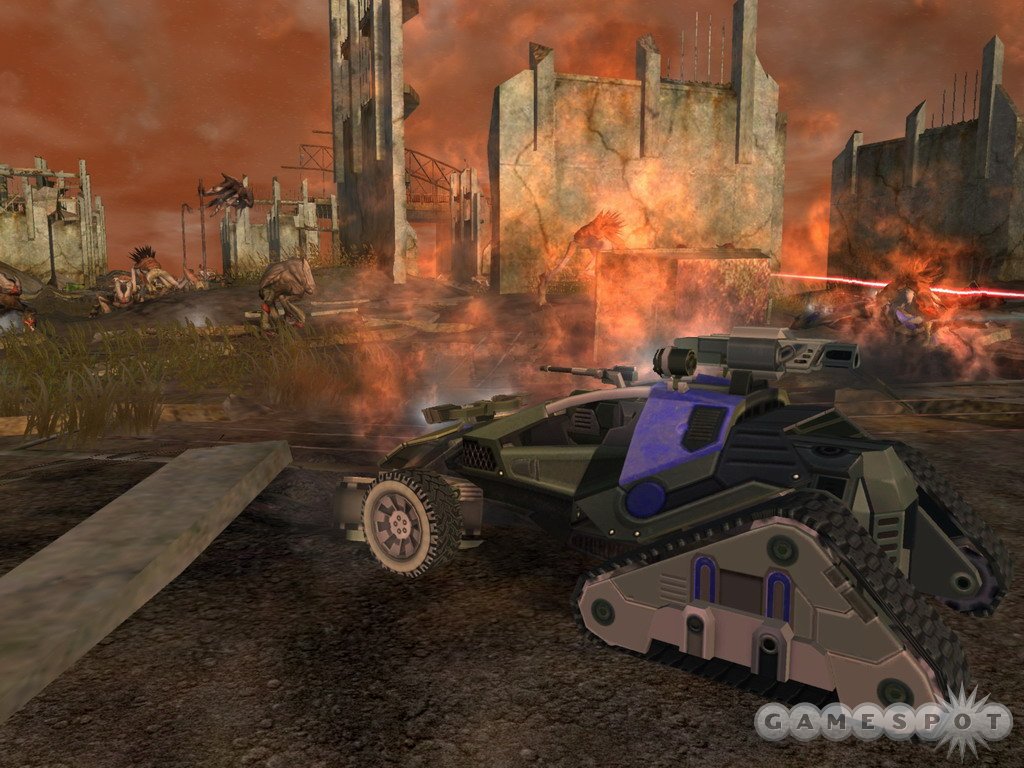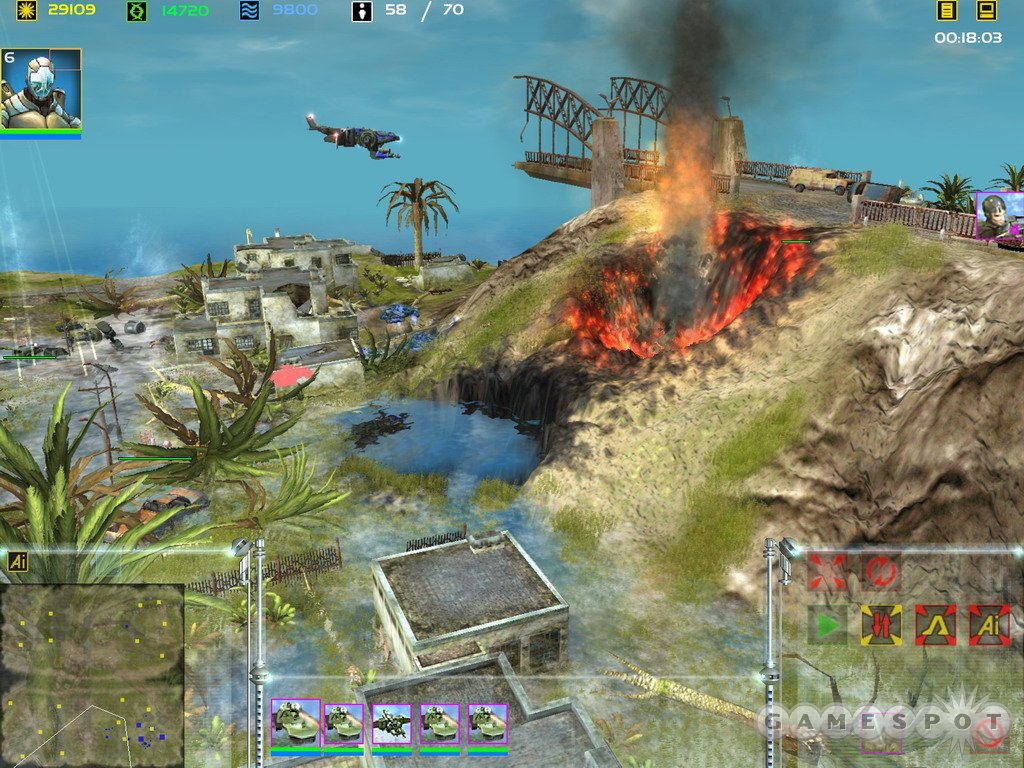Maelstrom Updated Impressions - Faction Details, Units, and Deformable Terrain
Codemasters shows us the latest progress on Maelstrom, a dynamic real-time strategy game featuring an alien invasion, transforming vehicles, and deformable terrain.
An alien invasion, a postapocalyptic landscape, and two warring human factions are at the heart of Maelstrom, an upcoming sci-fi real-time strategy game from Codemasters and developer KDV Vision. These two companies previously teamed up for 2004's Perimeter, an innovative game that introduced many of the features that will be in Maelstrom. While most real-time strategy games are content to let you just battle it out on the map with two big armies, Maelstrom will let you reshape the landscape as you play, changing the dynamics of the map in real time.

Set approximately 50 years in the future and after a global climate crisis wipes out most of humanity, Maelstrom is the story of how the two surviving human factions find themselves facing an invasion of aliens looking for a new home. The first human faction is the Ascension, an authoritarian group (not surprisingly modeled on modern corporations) that wants to rebuild the planet using its own vision, and it will wipe out anyone who disagrees. The second human faction is the Remnant, freedom fighters who are experts in guerilla warfare. Then there are the Hai-Genti, the aquatic aliens who want to transform Earth into an oceanic home.
While it's true that most real-time strategy games feature unique and distinct factions, it seems like Maelstrom runs with this idea. The most "traditional" of the factions is the Remnant, which is armed with futuristic versions of modern-day weaponry. That means tanks, artillery guns, and helicopters, though thanks to the bleak future, all of these look like they've seen better days. Being a high-tech faction, the Ascension differ vastly from their human brethren in that they employ transformable vehicles. Imagine a tank that transforms into a giant robot, another tank that can transform into a huge fighter, or a two-legged stormwalker that can suddenly turn into a nimble fighter. Finally, there are the Hai-Genti aliens, which genetically engineer themselves to create all sorts of fearsome creatures, so they rely on organic units, rather than mechanical ones.
Maelstrom will ship with four campaigns, with each campaign supplying a different chapter in the overarching story. The story begins with you playing as the Remnant, then the Ascension, and then the aliens, before it all wraps up in the fourth and final act. Both Codemasters and KDV learned a lot from Perimeter, a high-concept sci-fi story that managed to alienate many with its cerebral plot, so the idea with Maelstrom is to introduce an epic battle for the planet, which is something that everyone can get behind.
And what makes Maelstrom different from a lot of real-time strategy games is the dynamic nature of the gameplay itself. The idea of terraforming the world during the game is a key concept, and you'll see this in many ways. Explosions will form craters in the ground, and these craters can fill with water, which can play a role later on. The aliens, being aquatic in nature, must flood the Earth, so they'll pump large amounts of water to the surface and inundate big areas of the map, rendering it inaccessible to most human units. However, to get around this, human technology can freeze the water, or, on the flip side, melt ice, so you can use this to your advantage. If the enemy is attacking your position over a frozen lake, use lasers to melt the ice and watch them sink to the bottom, then freeze the lake again and encase them in the ice.

Interestingly enough, we've learned that the graphics engine in Maelstrom isn't voxel-based, as Perimeter was. Voxels are essentially pixels, and as such they offer quite a different look than polygons, which are what virtually every 3D game is built on. However, Maelstrom uses a polygon-based engine this time around, though many of the unique terraforming features of Perimeter are still in place. And one of the nice aspects of the new engine is the ability to zoom down very close to the units, which will be useful for one of the new gameplay elements, which is the ability to take direct control of a unit, such as a tank, and pilot it yourself. There are plenty of interesting ideas in Maelstrom, and if it can build on the innovations introduced in Perimeter, we can expect a pretty dynamic game. Maelstrom is scheduled to ship this autumn.
Got a news tip or want to contact us directly? Email news@gamespot.com
Join the conversation